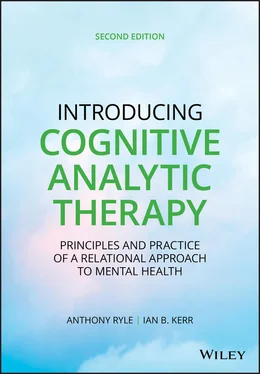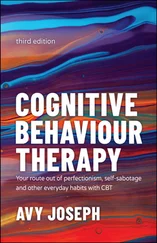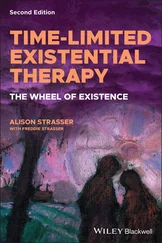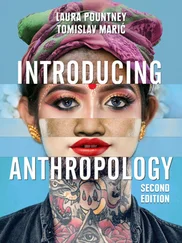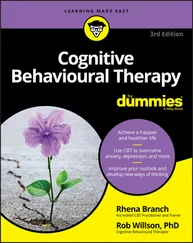Formative RRs are understood to determine and underlie our sense of Self, of Self in relation to others, and also the repertoire of “responsive” (as initially described by Leiman) or “coping” patterns we subsequent develop (“reciprocal role procedures”). Common RRs range from, for example, “ properly caring for/loving—properly cared for/loved ” at one extreme, through to “ emotionally neglecting—emotionally neglected, ” or, “ abusing—abused ” at the other. The actual verbal description of a RR in therapy, however, would be always be negotiated with a patient to whom it must make personal sense. Importantly, the experience or enactment of a RR or RRP always unconsciously anticipates, or attempts to elicit, an expected reciprocal reaction from a historic or current other. In CAT, all mental “activity,” whether conscious or unconscious, is understood (following Vygotsky) to be rooted in and highly determined by our repertoire of RRs, as is, correspondingly, virtually all human psychological distress and disorder or “psychopathology.”
We note an important theoretical and clinical distinction that should be made between early “formative” or developmental RRs that are internalized to constitute aspects of the developing Self, and those “situational” RRs subsequently or currently encountered (e.g., a “benign” therapeutic role, or an adverse “victimizing” role; for example, in a bad marriage, or possibly in a “demanding” or “rejecting” mental health service). One of us (TR) has previously illustrated the idea of such a “situational” RR by the example of a “self—fishmonger” situational RR experienced when shopping for fish! A situational RR could also be experienced (e.g., “teaching–taught”) in a training workshop. However, these situations might also further evoke or trigger other underlying formative RRs (e.g., “criticizing–criticized”). Importantly, these latter situational roles may also gradually be internalized, although evidently very much less fundamentally than formative RRs. Indeed, this is a desired outcome of the therapy relationship itself. In reality, formative and situational roles exist on a spectrum, but the distinction is important especially with regard to conceptualizing the early formation (or deformation) and constitution of the Self. The idea of internalization of relational experience as formative RRs is analogous to the concept of internalized “object relations” (albeit in some very diverse conceptualizations), upon which the PSORM is founded. It may also be important therapeutically when sharing such understandings and their consequences with patients. While clinical experience suggests that formative RRs may be modified and attenuated, in part simply through their naming and recognition and through their emotional processing, they are never entirely negated, and their enactment and re‐experiencing may recur under conditions of stress or difficulty at any time. This may be a point worth anticipating with patients, for example close to termination of therapy, or in “goodbye” letters. These differing forms of RRs should be borne in mind and helpfully noted in diagrams (see Chapters 4– 6). These key concepts (RRs and RRPs) can be seen as representing, broadly, the “analytic” and “cognitive” aspects of CAT respectively.
We note here also that a particular CAT concept of Self, as described in the first edition, has increasingly come to constitute a key “organizing construct” in CAT theory and practice. As such the word has been capitalized to imply a substantive entity used in this particular manner (see Glossary and Chapters 3and 4for further explication). Within CAT, the process of development is understood to result in a Self that is subjectively and “objectively” fundamentally different and diverse depending on formative interpersonal and socio‐cultural experience. This point has also been made from the perspective of cross‐cultural psychology and psychiatry (Bruner, 2005; Bhugra & Bhui, 2018; Bhui & Morgan, 2007; Paris & Lis, 2013; Kirmayer & Ryder, 2016) and further elaborated elsewhere from a CAT perspective (Kerr & Ryle, 2006; Kerr et al., 2015). This developmental process also generates our values and beliefs and our very “felt sense” of individual self, and of relations to others. Indeed, the very notion of an individual self would be inconceivable in most more traditional cultures (see Chapter 3). CAT stresses, therefore, the importance of social and cultural factors in contributing to mental disorder and also in limiting the likely outcome of treatment. These would include, for example, inequality, powerlessness, poverty, unemployment, hopelessness, collective demoralization, and so forth as documented and corroborated by various authors from different fields (e.g., Dorling et al., 2007; Hagan & Smail, 1997; James, 2018; Stieglitz, 2012; Trevarthen, 2017; Weich & Lewis, 1998; Wilkinson & Pickett, 2009; Weich, Patterson, Shaw, & Stewart‐Brown, 2009). From this perspective, therefore, it is understood that in an important sense there can be no such thing as an “individual,” just as Winnicott postulated with regard to the nursing mother and baby. Rather, the individual is seen also as a dynamic fragment of a social whole, and, correspondingly, individual mental health and well‐being can only be considered as part of that overall socio‐cultural context.
The concept of Self would be currently described from a CAT perspective as follows (see also Chapter 3and Glossary):
The Self in CAT is understood to be a bio‐psycho‐social entity that emerges through a synthetic or dialectical, semiotically‐mediated developmental process involving all these dimensions. It is understood to be characterized by a sense of agency, coherence, continuity, of embodiment, of subjective and reflective awareness, identity, and for some by a sense of spirituality. The structure and function of Self is understood to include and integrate such functions as perception, affect, memory, thinking, self‐reflection, empathic imagination, relationality, creativity, and executive function. It is understood to comprise both subjective and experiential as well as observable functional aspects. The Self is also characterized by a tendency both to organize and be organized by experience. It emerges developmentally from a genotypic Self characterized by various innate predispositions, notably to intersubjectivity and relationality, so enabling and needing engagement and interaction with others from the beginning of life. The mature, phenotypic Self is considered to be fundamentally constituted by internalized, sign‐mediated, formative interpersonal experience and by dialogic voices associated with it (reciprocal roles), and to be characterized by a repertoire of emergent adaptive, “coping,” or “responsive” patterns of interaction (reciprocal role procedures). Although profoundly rooted in and influenced by early developmental experience, the Self is understood to be capable of a degree of choice and free will. The Self is understood to be dependent on others and on social location for its well‐being both during early development and throughout life .
It became, however, gradually clear through work with patients with “borderline” personality‐type disorders (BPD) that harmonious and consistent mobilization of RRs and RRPs within a well integrated Self does not always occur. This topic will be discussed further in Chapter 10. Many borderline features are best explained as the result of the partial dissociation of the patient's core RR and RRP repertoire, dissociation being understood in part as discontinuities in, and incomplete access between, different RRs and procedures. This response is understood to occur in the face of extreme adversity, emotional deprivation, or overt trauma. These are seen to result in abnormal development of the meta‐procedural system in subjects possibly more genetically predisposed to dissociate (see Chapter 10). This borderline structure is depicted in diagrams by describing separate cores to the diagram indicating what are best described as different Self States (dissociated RRs and associated RRPs). This somewhat clumsy title helps to prevent confusion between the theoretical concept of the Self State and the subjective experience of a state of mind or state of being. At any one time, the behavior and experience of an individual with borderline‐type problems is determined by only one of these Self states. The switches between, and the procedures generated by, these discrete states are mapped in Self‐state sequential diagrams (SSSDs) or “maps.” Similar structures are found to some extent in many patients who do not meet full criteria for borderline personality‐type disorders (see the case history at the end of this chapter). This conceptualization, implicit in CAT, of increasing degrees of severity and complexity in relation to damage and dysfunction of the Self and its structure and processes represents, we suggest, a more helpful dimensional and “transdiagnostic” approach to the understanding and description of mental distress and disorder.
Читать дальше
